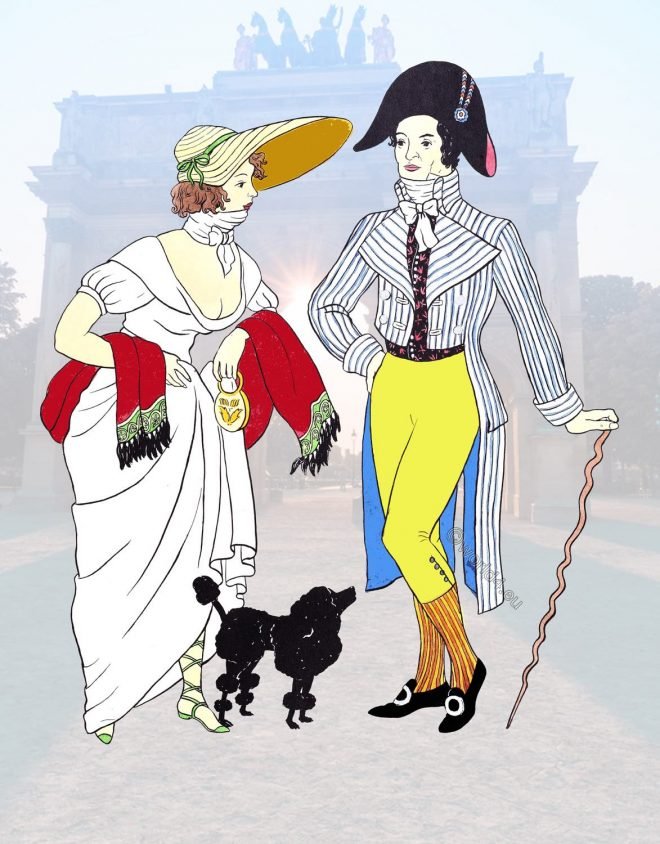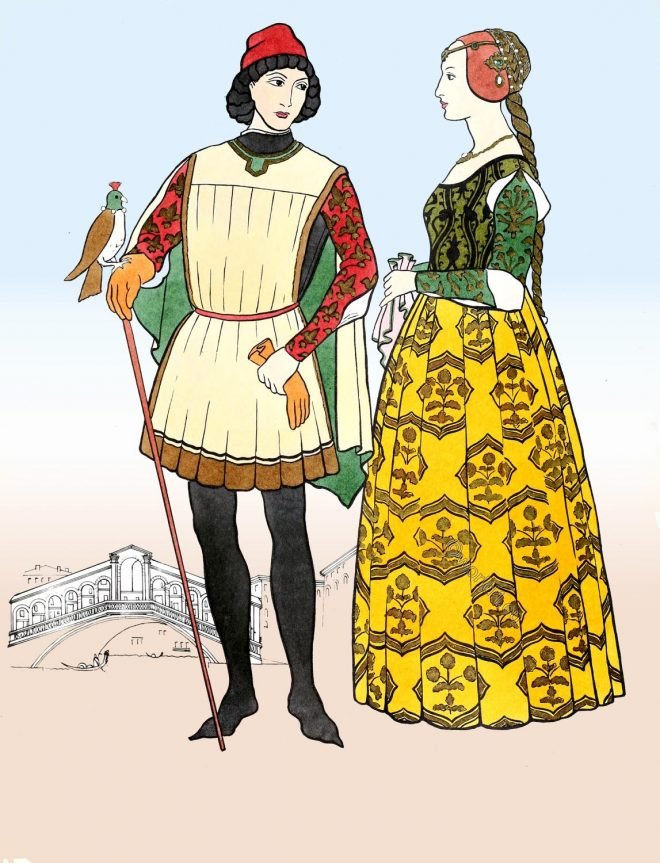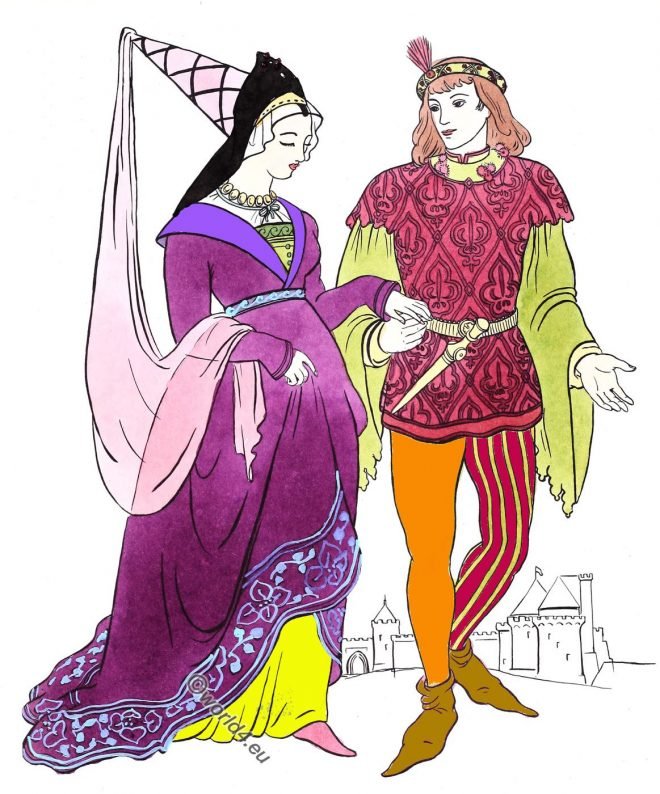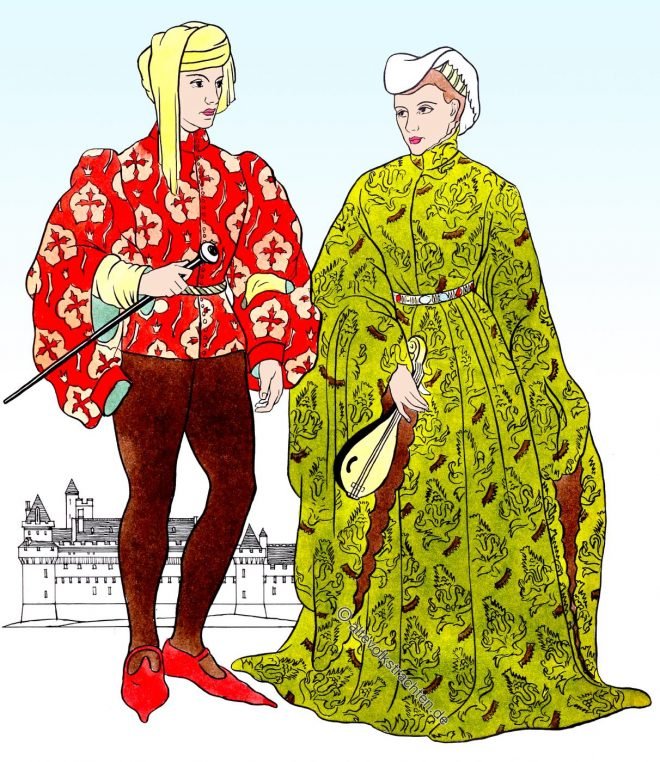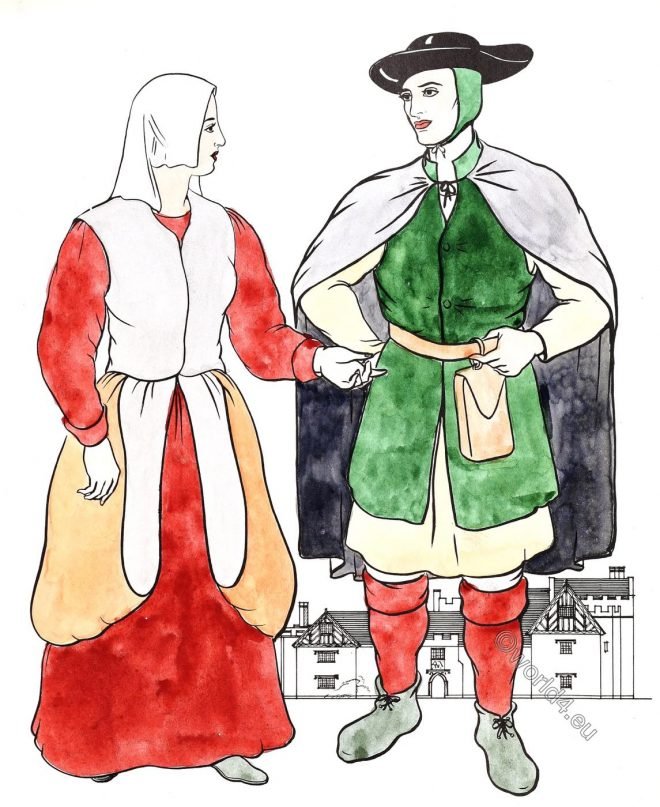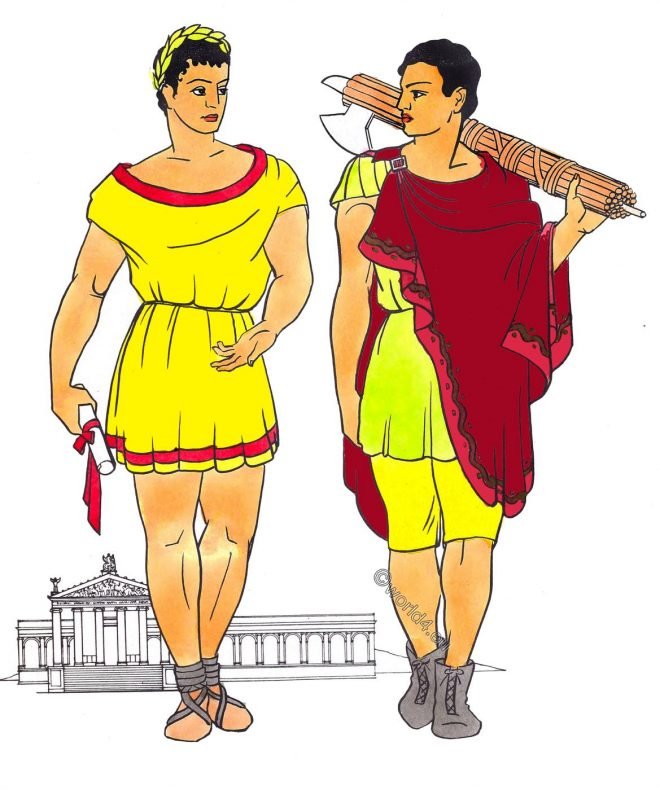The striped stockings and crooked stick are characteristic of the Incroyables. The trend toward simplicity resulted in a classic silhouette for women (Merveilleuses).
Tag: Iconographie du costume
Iconographie générale et méthodique du costume du IVe au XIXe siècle. Collection gravée à forte d’après des documents authentiques & inédits par Raphaël Jacquemin. Paris 1869.
Italy 15th century. Typical Italian Renaissance woman’s ensemble.
Italy 15th century. Fashion from 1400 to 1500. Typical Italian Renaissance woman’s ensemble. The Cotehardie and houppelande.
Transitional Female costume. Elizabethan fashion 1550 to 1620.
Transitional Female costume between the Elizabethan and Charles I modes. Elizabethan fashion 1550 to 1620.
Cotehardie, Houppelande and Hennin. Fashion of the late 14th century.
The two people in this plate lived very late in the 14th Century and were probably young fashionables who were up to the minute in their styles.
Byzantium. Costumes of the Eastern Roman emperor and empress.
History of Costume. Byzantium. 400 – 1100 AD. Costumes of the Eastern Roman emperor and empress.
Cotehardie and houpelande in the 15th century. Middle Ages.
The cotehardie has adopted its main characteristics from the houppelande. The doublet or gipon. Fashion history. Burgundy 15th century.
England Tudor. The peasants’ dresses during the reign of Henry VIII.
England Tudor. Peasant clothing from 1500 to 1550, during the reign of Henry VIII. Renaissance 16th century. History of costume.
The toga of a Roman senator. The armor of a Roman general.
Costume of the Roman Empire 31 B.C.- 476 A.D. The figure symbolizes the two characteristics that made Rome great statesmanship and military power
The usual Roman garment during the Republican Rome.
Rome during the height of its culture. Roman Republic. 500 B.C. – 30 B.C. The toga. The tunica. The abolla.
The costume of the Roman women. Republican Rome.
Republican Rome 500 BC – 30 BC.. The costume of the Roman women are very much like the Greek dress.

